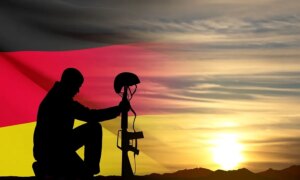Germany’s Historic Deployment: A Divisive Move Towards Militarization

Germany is on the brink of a significant military transformation, marking the first permanent deployment of its troops outside of its borders since the dark days of World War II. This momentous decision comes in the wake of heightened tensions along NATO’s eastern frontier, particularly as German Chancellor Merz has championed troop deployments to Lithuania.
The Road to Militarization: A Complex History
Germany’s military relationship with international conflict is steeped in history, laden with the scars of the past. Following World War II, Germany underwent extensive disarmament and demilitarization, which was stipulated under the Allied occupation. The Potsdam Agreement fractured the nation into four zones of control, rendering it devoid of any independent military forces.
Fast forward to the 1950s, during the Cold War, the geopolitical landscape shifted. East and West Germany emerged with divergent military capabilities; West Germany joined NATO and established the Bundeswehr (defense forces), allowing it to re-arm under NATO’s umbrella. In stark contrast, East Germany created its own military under Soviet control but remained equally constrained by the ongoing tensions of the Cold War.
The 1990 reunification treaty imposed limitations on Germany’s military size and capabilities, a mandate that has persisted as Germany has operated mostly within NATO and EU missions. However, recent developments—especially with Merz at the helm—signal a shift towards a more aggressive posture that could invert this long-standing paradigm.
The Warning Signs: A Potential for Escalation
The deployment to Lithuania not only signifies a historic shift for Germany but is also perceived as a strategic aggression bordering on warmongering. Is this a first step towards a broader military engagement? Germany’s intentions, under Merz, seem to extend beyond mere defense. As tensions rise with Hungary for its reluctance to support aggressive stances against Russia, one cannot help but question if German troops will also soon be sent into Ukraine under the guise of “protection.”
The narrative surrounding such deployments often echoes the rhetoric that predated previous conflicts, a narrative that could dangerously romanticize military action under fabricated pretenses of "defending" allies. The haunting memories of justifying military actions during World War II resurface alarmingly.
A Comparative Look: Germany vs. Japan
While Germany re-establishes its military footprint, Japan remains entangled in its own web of constitutional pacifism, dictated by Article 9 of its post-war constitution. The stark contrast in military engagements can be misleading. In Japan, constitutional constraints have historically limited its Self-Defense Forces (SDF) to a purely defensive stance. Recent reinterpretations enabled Japan to provide support to allies, but even so, substantial overseas deployments remain contentious and are still subject to significant legal scrutiny.
Conversely, Germany has made substantial strides in military integration within NATO, operating under collective defense missions with comparatively fewer restrictions. Notably, while both nations have forsaken nuclear weapons, Germany allows U.S. nuclear arms to be stationed on its to secure NATO’s deterrent strategy—a complex alliance network that Japan does not enjoy.
Key Differences:
- Sovereignty: Germany’s military regained its operational independence earlier under NATO compared to Japan, which still grapples with constitutional limits.
- Deployment Authority: Germany’s military operates under NATO mandates, whereas Japan requires stringent legal justification for overseas actions.
- Nuclear Policy: Germany accommodates U.S. nuclear arms; Japan does not.
Global Ramifications: What Lies Ahead?
As the backdrop for these developments unfolds, we must highlight two critical characters on the global stage: Putin and Kaja Kallas. While NATO ramps up its military posture against Russia, Putin is not just watching; he’s preparing for escalation with one of the largest military mobilizations seen in years. This growing tension is more than just a chess match; it risks evolving into a catastrophic miscalculation.
Kaja Kallas’s fervent anti-Russian sentiment and inflammatory rhetoric, positing the breakup of Russia itself, appears to be a dangerous game for the EU. This begs the crucial question: are we heading towards a conflict that could engulf Europe and lead to an unprecedented humanitarian crisis?
Conclusion: A Critical Moment in History
The imagery of German troops deployed in Lithuania is a stark reminder of the cyclical nature of history. As we navigate this critical juncture, we must remain vigilant. The prospect of a renewed militarization of Europe can no longer be treated lightly. The clock is ticking, and one must wonder—how soon will the consequences of these decisions unfold?
At Extreme Investor Network, we keep you informed with unique insights and analysis as these geopolitical tensions play out. Stay connected with us for more in-depth discussions on how these global events could impact your investments and the broader economic landscape. Don’t miss out on understanding the forces shaping our world; subscribe for more commentary and exclusive content that you won’t find anywhere else!

